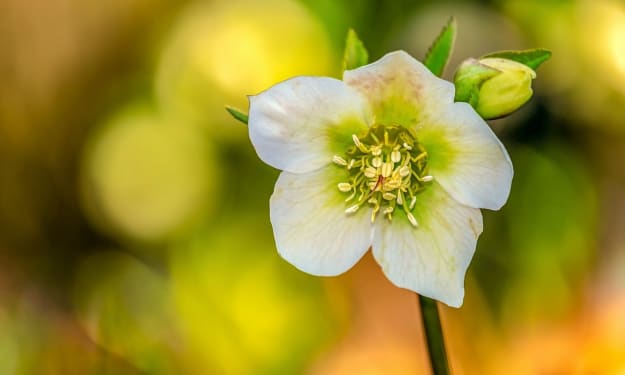Growing and Caring for Balloon Flowers in Your Garden
A Splash of Color and Charm

Balloon flowers are enchanting plants that bring unique color and charm to gardens worldwide. They are scientifically known as Platycodon grandiflorus and belong to Campanulaceae, commonly known as the bellflower family. With their intriguing Balloon-like buds that gradually unfurl into beautiful bell-shaped flowers, these perennials captivate the eyes and spark curiosity. Native to East Asia and commonly referred to as Chinese bellflowers or Japanese bellflowers, these flowers have found their way into the hearts of gardeners and enthusiasts everywhere.
The name "Balloon flower" perfectly encapsulates the distinct feature that sets this plant apart. Before opening, the flower buds swell and take a rounded shape, resembling tiny inflated balloons waiting to burst. This fascinating phenomenon adds an element of anticipation and whimsy to the garden, making them a delightful choice for those seeking a touch of magic in their floral displays.
Beyond their intriguing buds, Balloon flowers offer various colors to suit different preferences and garden designs. From shades of blue, purple, and pink to pristine white, their blossoms paint the landscape with a vibrant palette, attracting the attention of pollinators like butterflies. With their intricately fused petals, the star-shaped flowers create a sense of elegance and grace, enhancing their visual appeal.
Aside from their aesthetic allure, these flowers are known for their resilience and adaptability. These hardy perennials can withstand various growing conditions, making them suitable for various climates and landscapes. Whether you have a sunny garden bed, a partially shaded corner, or even a rock garden, Balloon flowers can find their place and flourish, adding their unique character to the surroundings.
Choosing the Right Location
When it comes to growing Balloon flowers successfully, selecting the right location in your garden is crucial. Consider the following factors to ensure optimal growth and blooming:
- Sunlight: Balloon flowers thrive in full sun to partial shade conditions. Look for a spot in your garden that receives at least six hours of direct sunlight daily. While they can tolerate some shade, too much may result in reduced flowering and weaker growth. Aim for a balance that provides adequate sunlight without subjecting them to intense afternoon heat in warmer climates.
- Soil Conditions: Balloon flower plants prefer well-draining soil rich in organic matter. Before planting, assess the soil in your chosen location. Amend heavy clay soils with organic compost or well-rotted manure to improve drainage and soil fertility. If your soil tends to be sandy or loamy, adding organic matter will help retain moisture and promote nutrient availability.
- pH Level: Balloon flowers generally prefer slightly acidic to neutral soil conditions. A pH level ranging from 6.0 to 7.0 is ideal for their growth. Test your soil's pH using a home soil testing kit, available at most garden centers. Based on the test results, if necessary, adjust the pH by incorporating appropriate amendments, such as sulfur to lower pH or lime to raise pH.
- Air Circulation: Good air circulation around Balloon flowers is essential for preventing diseases and ensuring healthy growth. Avoid planting them in areas with excessive crowding or where structures or tall plants may obstruct them. Adequate spacing between plants allows air to flow freely, reducing the risk of fungal infections and promoting overall plant health.
- Protection from Strong Winds: While Balloon plants can tolerate some wind, strong gusts can damage their delicate stems and flowers. If your garden is prone to strong winds, consider planting them near windbreaks such as fences, hedges, or larger shrubs. This provides them with some protection while still allowing airflow.
Planting Balloon Flowers
Once you have chosen the right location for your Balloon flowers, it's time to begin planting. Follow these steps to ensure a successful start for your Balloon flower plants:
Timing
The ideal time to plant Balloon flowers is in early spring when the soil has thawed, and the danger of frost has passed. This allows the plants to establish their root systems before the summer heat. If you live in a region with mild winters, you can plant them in the fall, allowing them to settle in before the dormant period.
Preparing the Soil
Before planting, prepare the soil by removing any weeds or grass from the area. Loosen the soil to a depth of about 12 inches (30 cm) using a garden fork or tiller. This improves soil aeration and drainage, ensuring healthy root development. Incorporate organic matter such as compost or well-rotted manure into the soil to enhance its fertility and moisture retention capabilities.
Read Also: Guide to Growing Hellebore Flowers
Digging the Planting Hole
Dig a hole slightly larger and deeper than the root ball of the flowering plant. The extra space will accommodate the roots as they expand. The depth of the hole should be such that the top of the root ball is level with the soil surface.
Planting
Remove the plant from its nursery container, carefully not damaging the roots. Place the plant in the prepared hole, ensuring it is centered and upright. Backfill the hole with soil, gently firming it around the roots to eliminate air pockets. Avoid packing the soil too tightly, hindering water penetration and root growth.
After planting, thoroughly water the newly planted Balloon flower to settle the soil around the roots. This helps eliminate any remaining air pockets and ensures good root-to-soil contact.
Mulching
Applying a layer of organic mulch around the base of the plant helps retain soil moisture, suppress weed growth, and regulate soil temperature. Use a layer of mulch around 2 to 3 inches (5 to 7.5 cm) thick, leaving a small space around the stem to prevent moisture-related issues.
Spacing
Allow sufficient spacing between Balloon flower plants to provide them with room to grow and spread. Space multiple plants around 12 to 15 inches (30 to 38 cm) apart, depending on the specific variety and expected mature size. Adequate spacing promotes airflow, reduces the risk of diseases, and allows each plant to receive sufficient light and nutrients.
Balloon Flower Care
Once you have planted your Balloon flowers, proper care is essential to ensure their continued health and vigor. Here are some indispensable care practices to keep in mind:
Watering: Balloon flowers prefer consistent moisture but are susceptible to root rot if the soil becomes waterlogged. Water the plants deeply once or twice a week, providing about 1 inch (2.5 cm) of water each time. Monitor the moisture levels in the soil and adjust watering frequency based on weather conditions. During periods of heavy rainfall, reduce watering to prevent over-saturation. Balloon plants are moderately drought-tolerant, but prolonged dry spells can impact their overall performance, so striking a balance is essential.
Fertilization: Balloon flowers are not heavy feeders but can benefit from a balanced, slow-release fertilizer. Apply a granular fertilizer formulated for flowering perennials in early spring, following the package instructions for proper dosage and application. Avoid excessive fertilization, leading to leggy growth and reduced flower production. Over time, organic matter incorporated into the soil during planting will also contribute to the plant's nutrient needs.
Pruning and Deadheading: Pruning Balloon flowers can help maintain shape and encourage bushier growth. Trick back any dead or damaged stems in early spring before new growth emerges. This promotes healthier growth and reduces the risk of disease. Deadheading spent flowers promotes continuous blooming and prevents self-seeding. Cut the faded flower stems down to the base, just above a healthy leaf node. This encourages the development of new buds and prolongs the blooming period.
Support for Tall Varieties: Some Balloon flower varieties can grow tall and may require support to prevent them from toppling in windy conditions. Install stakes or plant supports near the plants early in the growing season to provide stability. As the plants grow, gently tie the stems to the supports using garden twine or soft plant ties. This will help prevent breakage and keep the plants upright.
Winter Care: Balloon flowers are generally hardy perennials. In colder regions, they may die back to the ground in winter. Apply a layer of mulch around the plants in late fall to help protect the root system from freezing temperatures. This provides insulation and reduces temperature fluctuations in the soil. As new growth appears in spring, remove the mulch to allow the plants to flourish.
Pests and Diseases: Balloon flowers are relatively resistant to pests and diseases. However, watch for common garden pests like aphids and slugs. Employ organic pest control methods such as handpicking or insecticidal soap if necessary. Ensuring proper spacing between plants and providing good air circulation minimizes the risk of fungal diseases.
Division: Balloon plants can become overcrowded over time and benefit from division. When the plants are dormant in early spring or fall, dig up the clumps and separate them into smaller sections every three to four years. Replant the divisions in well-prepared soil, spacing them appropriately. This promotes healthier growth and rejuvenates the plants.
Wrapping Up
In the enchanting tapestry of a garden, where colors dance and petals sing, the Balloon flower stands as a true marvel, captivating hearts with its playful allure. Like a magician's trick, its balloon-like buds swell with anticipation, ready to unveil the enchanting secret hidden within. And as they unfurl, delicate petals emerge, forming exquisite bell-shaped blooms that beckon to nature's symphony.
So, why not introduce a splash of color and charm to your garden? With Balloon flowers, you can create a magical outdoor space that enchants you and your visitors while enjoying the beauty and resilience of this great perennials year after year.
👉 Do you have any additional insights or questions? We highly value your feedback. Please share your thoughts by leaving a comment below.
About the Creator
Amir Hossain
I blog on everything and anything— hoping my blogs will make your days a bit happier!






Comments
There are no comments for this story
Be the first to respond and start the conversation.